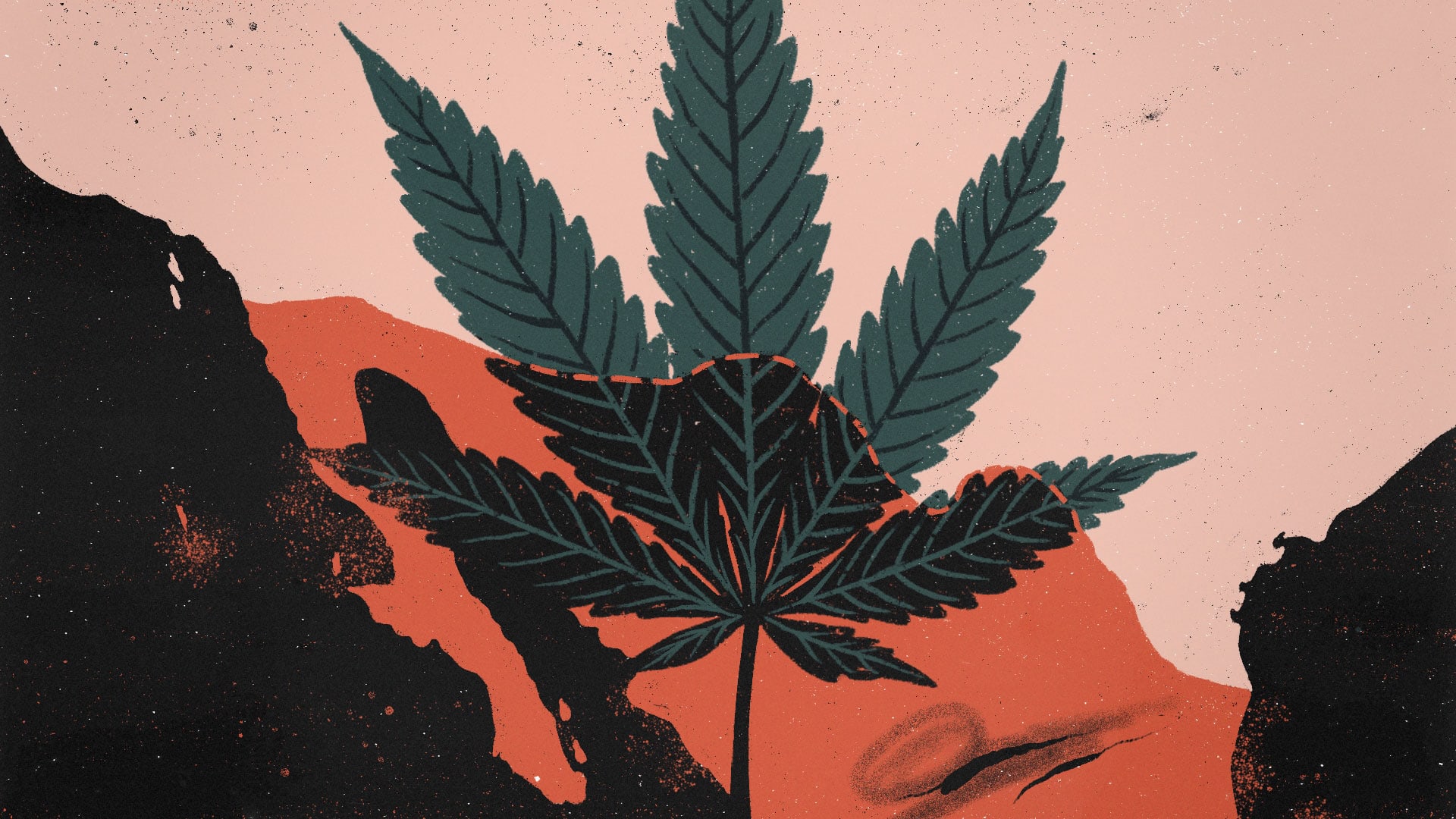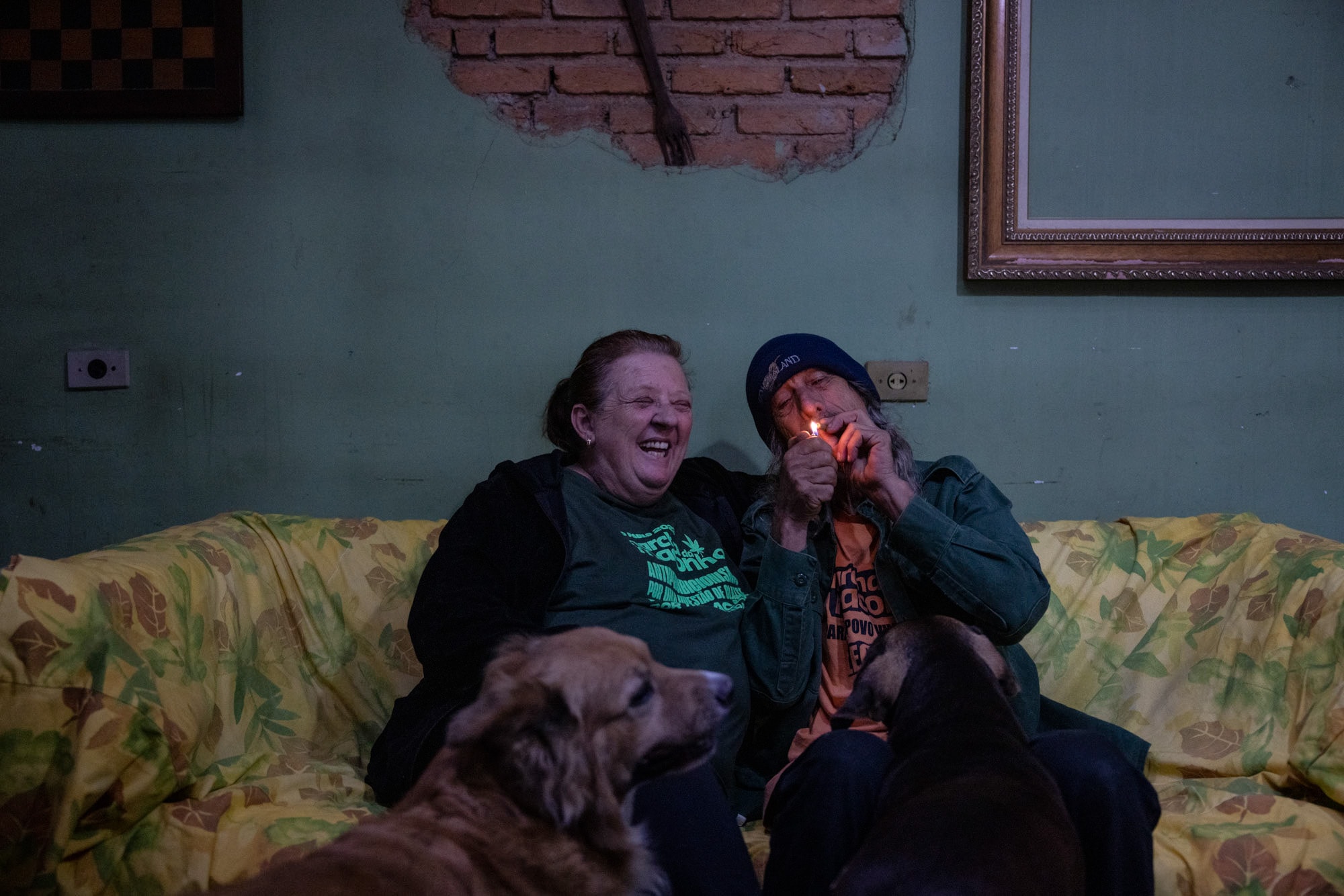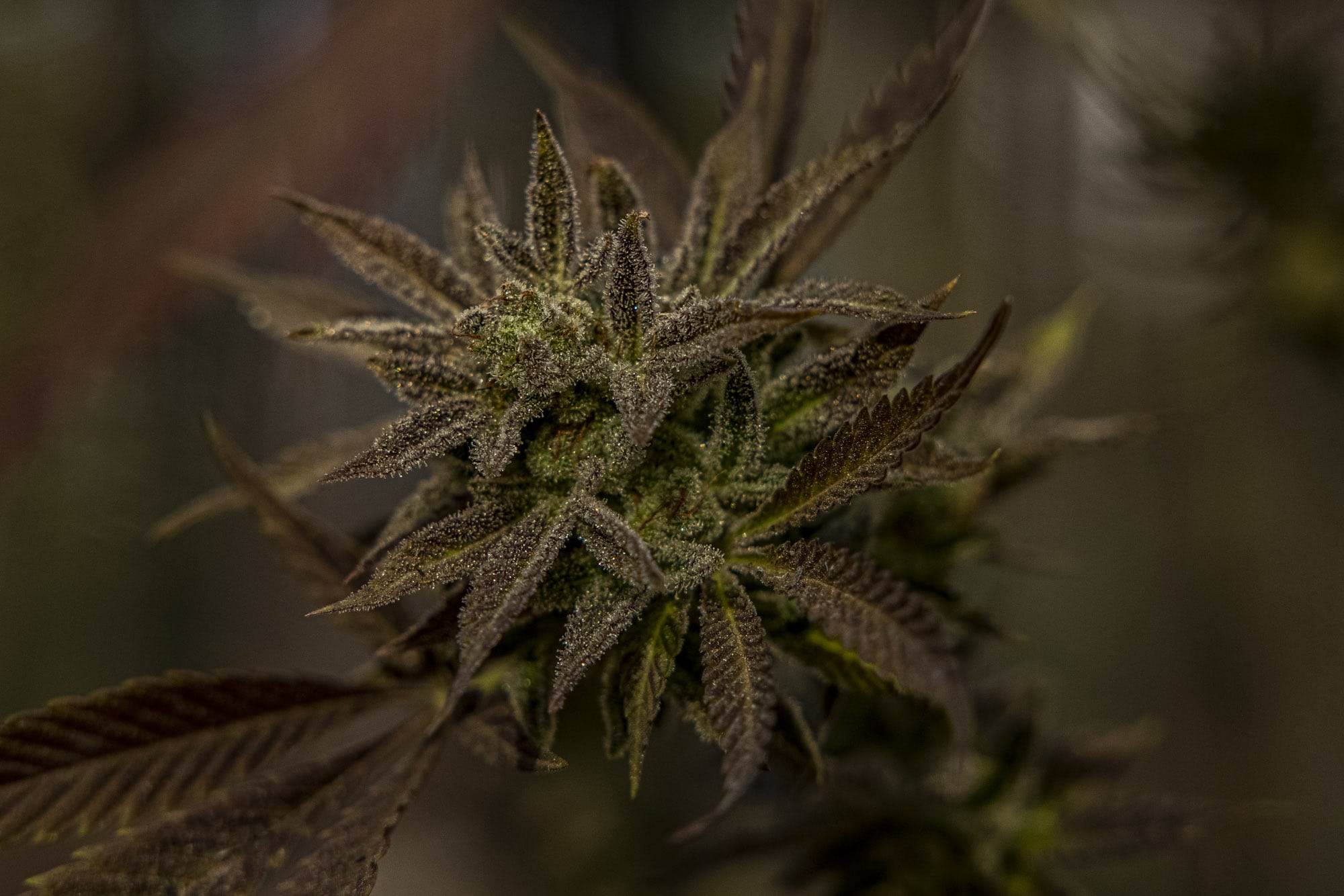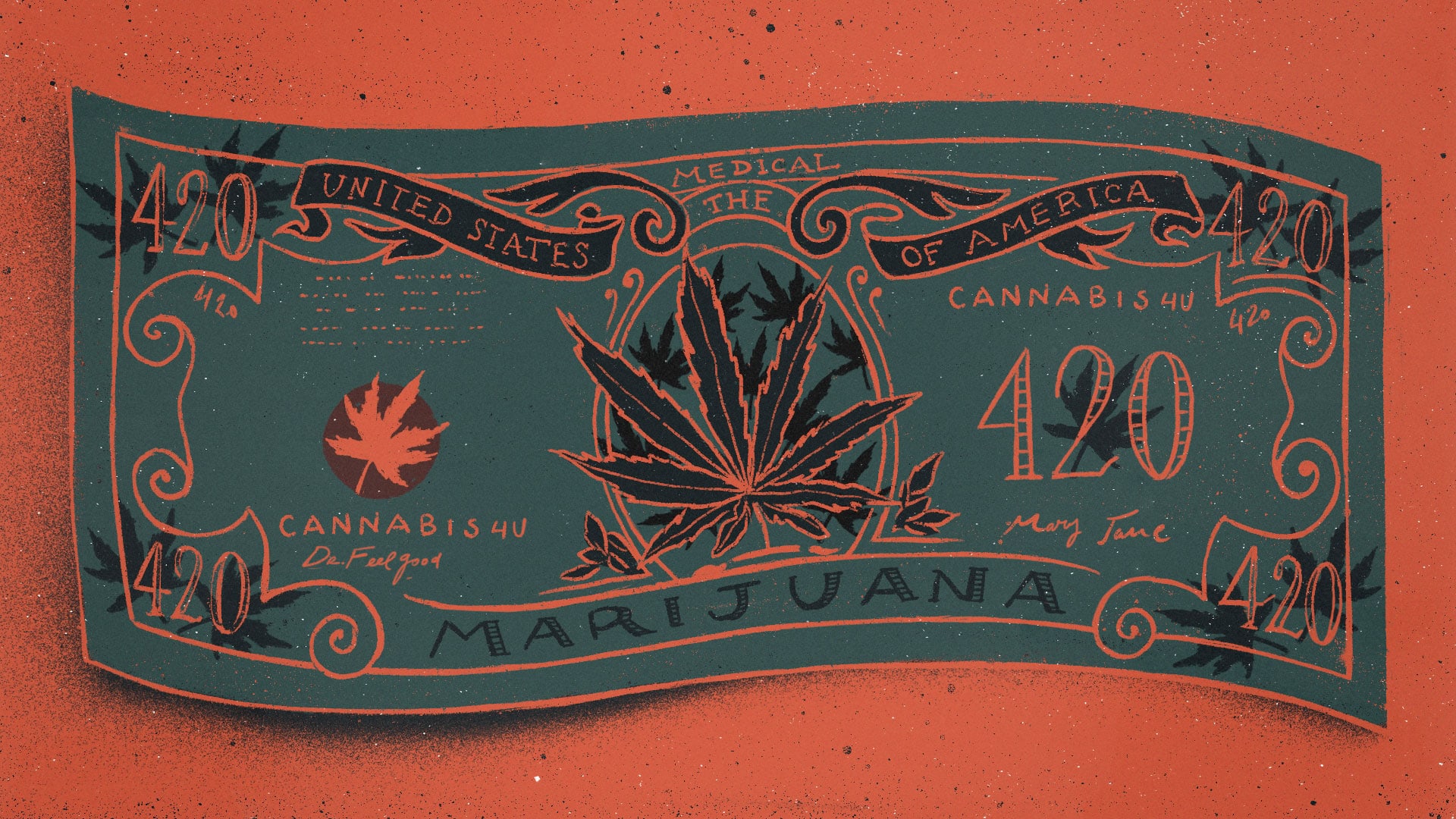
Cannabis south and north of the border: a market in the United States and a war in Colombia
Almost at the same time, in the United States, citizens of four states voted in favor of easing the cultivation and use of cannabis. A month later, on December 5th, the House of Representatives approved legislation that sought to decriminalize marijuana at the federal level. Although the bill stalled in the Senate, support was significant. Meanwhile, the market for products with CBD and THC as the main ingredients is flourishing.
This occurs in the north of the continent, while the DEA (Drug Enforcement Administration or office for drug control of the United States) maintains operations in Latin America, persecuting and capturing those who grow or traffic marijuana, among other drugs.
The prohibitionist tasks in Latin America and the permissiveness in the United States regarding the use of marijuana, do not seem to make sense. A cynical contradiction. At the end of the day, it is the same country operating opposite to the side and side of the border. How is this inconsistency explained? The double standards of the current drug policy of the world’s greatest power appear paradoxical and at first glance incomprehensible. Perhaps it is not that much.
War on drugs
The war on drugs was inaugurated in 1971 by President Richard Nixon. Since then, it has left a trail of blood for decades in the producing countries. Colombia knows it first-hand. The dead have been on this side for a long time, while the demand for substances remained hidden both there and here.
Now that major U.S. companies are marketing a new lifestyle based on recreational weed use, more consumers have “come out of the closet.” Suddenly the harmfulness of this plant is not as harmful as it was believed, rather its many benefits are exalted. We see it in series, movies, magazines. It’s cool to use cannabis openly.
If in the north marijuana can be consumed in so many new ways, why does Latin America continue to live a policy of prohibition, criminalization, and stigmatization?
The United States is currently the number one Cannabis producer in the world, and the legal cannabis business in this country is considered one with growth potential. According to the report The U.S. Cannabis Report: 2020-2021 Industry Outlook, produced by New Frontier, a platform specialized in statistics on the cannabis industry in the world, explains that in 2019, American consumers spent almost 80 billion dollars on legal and illegal cannabis products. One of the most interesting points in the study is the change in markets and new consumers. Food and beverages, health and beauty, are new areas of expansion for this substance.
The most immediate conclusions after seeing these figures would serve to reaffirm the hypothesis of the double standard of the United States against marijuana, at least. There it is a millionaire business in expansion, here, in Latin America and countries like Colombia, it is largely an illicit business that is put face to face with prejudice, blood, and fire. But the matter, as you might expect, is not that simple.
The gringo side of the matter
Let’s start by saying that the United States is not a homogeneous country. The 320 million inhabitants of the world’s largest power live in very different economic conditions. For example, among the G7 countries (the group of most powerful industrialized countries in the world), the United States is the second most unequal, after China. And among the member countries of the Organization for Economic Cooperation and Development (OECD), it ranks fourth.
The social and economic inequality of the United States can be explained in many ways, but there is a very particular one that is fundamental when analyzing its drug policy and the recent boom of legal marijuana: racial discrimination. Afro and Latino populations have historically been the most impoverished in that country.
A look at the racial is not only important to review the gringo policy against drugs, but it is key to understanding its foreign policy, but we go by parts. For Steven Hawkins, executive director of the Marijuana Policy Project, America’s war on drugs is a war on racialized lives. This plant, he says, has been at the center of this war since, in 1970, during the Nixon presidency, cannabis was classified as a Schedule 1 drug under the Controlled Substances Act. Since then, African-American and Latino populations have been harassed by the police, in many cases for negligible amounts and with fatal consequences.
To understand “the gringo side of the matter,” says Kyle Johnson, co-founder, and researcher of the Conflict Responses Foundation, there are different factors: “The first is that you have to take into account that, although federal laws govern the use of drugs In the last ten years the national government has allowed the states to make their decisions, especially regarding the use of marijuana”, he says.
“What we are seeing is people coming out with marijuana, but mostly white people. What has not happened with the legalization of marijuana is that the criminal records of those who have had a conviction, for example, for possession of marijuana, have not been eliminated”, Kyle explains . Social class and race combine to disproportionately affect Afros and Latinos as the use of marijuana is increasingly legal. Legal yes, but for white people.
On the other hand, what happens with the foreign policy of the United States against drugs is not public knowledge. Although it is politically profitable for many to say that they fight drugs in their international discourse, internally it is less and less popular. For Johnson, the way the poppy, cocaine, and marijuana war operates externally is not very well known among the citizens of his country and little is said about the spraying of crops with glyphosate. Besides, in Washington they believe that Plan Colombia was a success, despite the December 2020 report from the Western Hemisphere Drug Policy Commission hat shows otherwise. Colombia continues to be the world’s largest cocaine producer. The amount of coca cultivated reached a record 212,000 hectares in 2019.
Although the report focuses on the cultivation of coca, it considers cannabis and heroin as other substances that are produced in significant quantities in Colombia, and treated similarly.
But these advances once again highlight the racial disparity. “What happened with African Americans and also to a certain extent with Latinos is that the worst of the war on drugs fell on their shoulders, with convictions where the focus was on punishment and not on rehabilitation,” he explains. Johnson. This is a population with less access to justice, based on racial discrimination, so now, with the legalization of marijuana, this population is not part of the change. “That judicial and prison past has not been cleaned up. Legalizing marijuana does not by itself repair the errors of that internal war on drugs. The benefits of that legalization are used much more by white people than by black or Latino people. I don’t know if it’s double victimization or whatever, but it’s ridiculous,” he says.
The old debate about the need to change the perspective on drug policy is back on track. With the arrival of Joe Biden to the presidency, that possibility seems to open up, for example with his first annual strategy to combat drug-related problems within the United States. The document emphasizes treating the matter as a public health issue, since “people should not be imprisoned for using drugs, but receive medical treatment.” The implementation of this strategy remains to be seen, especially due to the apparent human rights approach, but for now, his discourse on reducing drug trafficking is not far from the arguments used by Plan Colombia at the time.
From the south
On the southern side of the border, marijuana, as well as cocaine and heroin, are produced largely paying with violence the war led by the United States and still in force in Latin America.
Isabel Pereira, a researcher at Dejusticia, considers key that even though the war on drugs was imposed by the United States, in the Colombian case that position found resonance with local agents who defended prohibition. “The political elites have very willingly adopted repressive policies against the peasantry and this is related to how the elites have behaved with the peasant and the rural world in general,” she explains.
Conflicts around cannabis are marginal compared to the magnitude of those related to coca. It would partially serve as an explanation for the Cannabis regulation in the North seems so disconnected from what is happening in the South. “The marijuana industry no longer needs the producing countries. There is a fracture that prevents these situations from having a dialogue and that is why the process of regulation models in the United States does not resonate with the situation of the conflict in Colombia,” she says.
Meanwhile, in Colombia, multiple problems coexist due to its character as a producer and consumer country. On the one hand, there is a high incidence of armed conflict associated with drug trafficking. This generates extremely dangerous environments for the most vulnerable population and persecution without a public health focus for consumers. Expert voices continually call for a transition to a drug policy that replaces the current prohibitionist model with one that guarantees human rights.
For Levinson Niño, a representative in Colombia of the Latin American Network of People who Use Drugs -LANPUD-, is very clear that drug policy produces different levels of affectation for each person. Gender, ethnicity, and age are factors that change that experience, but regardless of that, he affirms that consumers and non-consumers have been affected both in daily experiences and in the most structural aspects. “Having the appearance of a smoker and being stopped by the police is the most basic and urban thing, but this goes to problems such as land dispossession, the lack of protection for people who farm out of necessity because they have no other type of livelihood. Even if there is no budget for education because everything is for that war. Those are all consequences of those policies”, he says.esa guerra. Todas son consecuencias de esas políticas”, dice.
Just as drug policy has differential effects due to race, gender, and social class in the United States, in Colombia the situation has points in common, although of course, they correspond to a very particular context.
According to researcher Catalina Gil Pinzón, based on figures from INPEC (National Penitentiary and Prison Institute), a total of 24,917 people are accused of and convicted of crimes associated with trafficking, carrying, or manufacturing of narcotics until April 2020. This represents 20, 6 percent of the total prison population and becomes the fourth most punished crime.
Unfortunately, the INPEC data is not so detailed as to analyze this population in terms of race or social class. However, in the document prepared by the Dejusticia organization in 2017, Drug Crimes and Prison Overdose in Colombia, several points of interest are shown that suggest that the current drug policy approach criminalizes the most impoverished people, something similar to what happens in the United States.
In the case of the poorest departments of the country, where our racialized geography is evident, there is a higher proportion of captures for behaviors such as the maintenance or financing of illicit crop plantations. And in a sample of people convicted of the crime of trafficking, carrying, or manufacturing narcotics between 2010 and 2014, the Ministry of Justice and Law was able to determine that 19.4% were unemployed and the vast majority were engaged in informal occupations of low pay.
One of the conclusions of the document questions the massive incarceration of vulnerable populations “who have a marginal participation and are easily replaceable within the illicit economy, and who do not benefit substantially from the profits that are generated there”. But who also have not contributed to dismantle criminal organizations or reduce the supply and demand of illicit drugs.
Daniel Gómez Mazo, lawyer, and researcher on access to rights for Afro-descendants in the public discussion on this issue, indicates that it cannot be reduced only to what is the most effective mechanism to eradicate crops for illicit use in the country, but what is the least harmful to the rights of black, indigenous and peasant communities. Historical racism cannot be separated from the warmongering approach adopted by the current government to combat drug trafficking in areas with a high indigenous or Afro-Colombian presence.
The war on drugs starts from a punitive, repressive and stigmatizing narrative. The institutional denial of Colombia as a drug-producing country, but also as a consumer, distances us from more grounded approaches.
A millionaire business, for whom?
In recent years, the decriminalization of medical cannabis has opened the door to other logics of consumption that exceed the local market. The actors most interested in highlighting the potential of the legal cannabis business make esteemed millionaires where Colombia is presented as an ideal destination for foreign investment, and at the same time, the benefits for the national economy are highlighted. Until December 31, 2 019, the Ministry of Justice and Law granted 656 operating licenses to national and foreign companies in the different focuses of the business (use of seeds forever-98, cultivation of psychoactive cannabis plants-164, cultivation of non-psychoactive cannabis plants -394).
The largest corporations currently in Colombian territory are Pharmacielo, Khiron Life Sciences, Avicanna, Clever Leaves, Spectrum, and Aphria (Colcanna S.A.S.). According to data from Brightfield Group, sales of legal cannabis industries are valued at 563 million in Latin America for 2023. In the case of Colombia, the Colombian Association of Cannabis Industries (Asocolcanna), reported that this business received around 4,5 million dollars in total exports during 2020.
However, organizations like Dejusticia have warned that corporate interest in this industry can be problematic. In the document Principles for responsible regulation of the adult use of cannabis in Colombia, of 2018, they state that the interest of investors to settle in Colombia, given the geographical, climatic, and historical conditions for the cultivation of marijuana, must take into account a regulation “That places rural populations as the protagonist, whether they are peasant, indigenous or Afro-descendant”.
afrodescendientes”.
This regulation is considered fundamental, because otherwise, the profitability of the business may well be out of reach of the most immediate and needy populations of the growing areas. For example, it is reported that as of September 2018 at least seven Canadian companies had established their businesses in Colombia, with a low level of involvement of peasant and indigenous communities.
A more equitable cannabis future
How to reconcile an increasingly accepted trend of consumption in privileged social spheres, with a war that continues to hit the most vulnerable? The prohibition does not discourage production or consumption, but it does promote a military institutional response that in the Colombian case has affected impoverished and racialized populations for decades. If you look at consumption, the ban has not left a good balance either. Punitivism and stigmatization drive consumers into unsafe practices based on disinformation.
Talking about responsible consumption is, according to different studies, a way of approaching drug use from a more grounded perspective in a public health and human rights protection approach. As stated by the Drug Policy Alliance, they envision “a just society in which the use and regulation of drugs are based on science, compassion, health and human rights.”
For some of the critics of the prohibitionist policy, these approaches have done more harm than the drugs themselves. Now that the medicinal value of plants is so attractive to the pharmaceutical industry, they are left with a distaste. They know that the possible regulation moves because there is an interest in the market with organizations that have more power than the social movement. “The problem with this is that when they are regularized with the support of the market, the drugs become functional to the system. Cool to be regularized, but not if the argument is economic and for the benefits of the companies”, Levinson Niño says.
As a counter-response, cannabis user organizations promote practices such as self-cultivation. Although they welcome the regulation of medicinal consumption, they warn of the problems due to the presence of these pharmaceutical companies, as they fear that they will take over the business. For Niño, “the social movement is paying attention so that the weakest parts are included in this industry so that the peasant and indigenous communities are part, but that is difficult because they simply include them as employees, but this population needs to be access to land ”.
Discussing the changes taking place in the United States in the regulation of cannabis and what is happening in a country like Colombia is necessary, but it must be done considering the wide range of nuances that influence each context. A case to consider is the Mexican one, where the Supreme Court eliminated the rule that prohibits the recreational use of marijuana since June 2021 but is still awaiting a regulation that clarifies many doubts about the true scope of recreational consumption of the plant.
For now, is urgent to advocate for a comprehensive drug reform that goes beyond the discussion about the decriminalization of cannabis use and that encompasses the broad spectrum of the chain from cultivation and production.
Meanwhile, we will see how the United States moves towards regulatory models after being the biggest promoter of the war on drugs in Latin America. As Isabel Pereira says, “now the U.S. just washes its hands and continues its path of regulation leaving devastation behind”. All this while opportunistic politicians sink regulation projects in Colombia under the premise of punitive populism that does not solve anything, but serves to catch votes.


